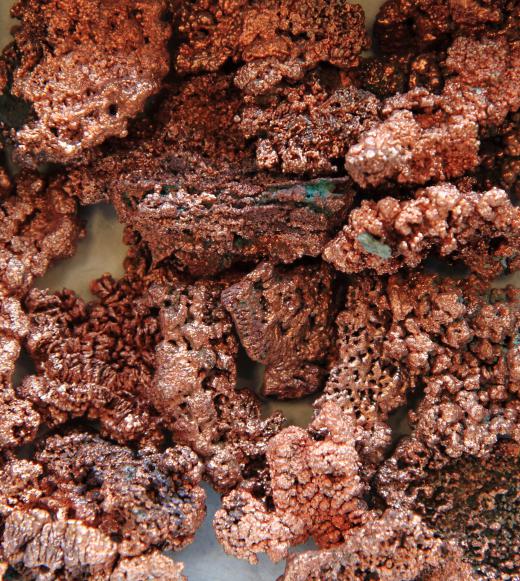Heap leaching is an industrial process for extracting precious metals and minerals by dissolving them from ore with liquids known as leaching solutions. The process is commonly used to extract metals such as gold, copper, and uranium yellowcake in addition to several other minerals. Heap leaching is usually carried out in the open and on slightly sloping ground covered with a watertight plastic sheet or clay layer onto which a heap of crushed ore is placed. The heap is sprayed with the leaching solution which percolates or flows down through it and dissolving and carrying away the metals as it goes. The solution is then collected, sent to a processing plant for treatment to separate the valuable elements, reconditioned, and sent back to the heap for another cycle.
Unlike conventional ore refinement processes which utilize extremely high temperatures and highly toxic chemicals, heap leaching offers operators an effective, low cost solution with little, if any, negative environmental impact. The environmental benefits of the heap leaching process include a lack of emissions from furnaces and no need for the destructive extraction of precious natural fuel sources. There is also very little risk of environmental contamination or the poisoning of people and animals due to spills and runoff of toxic chemicals. The leaching solutions are typically dilute alkaline cyanide or sulfuric acid cocktails which, although they sound dangerous, generally pose negligible risks. Process cost are also very low by comparison, thereby making heap leaching an attractive option from a financial perspective.

The application of leaching techniques to extract metals and minerals from parent ores has been in use for centuries; the refinement of iron sulfate is one of the first examples of the process. The underlying principle of heap leaching is simple when compared to other methods. The parent ore is first crushed and then heaped onto an impermeable or waterproof surface. This is typically a sheet of plastic or a specially formed clay bed placed on a slight slope to aid in the collection of the solution. The solution is sprinkled onto the heap and allowed to slowly soak down through the ore, thereby dissolving both the target element and other minerals along the way.
Once the solution reaches the waterproof layer at the bottom of the heap, it is channeled into a collection area, or leaching pond, were it is pumped away for treatment. During the treatment process, the dissolved elements are separated and the solution is reconditioned to its original concentration before being recycled for further use. The heap leaching process is used to extract metals such as gold, copper, and nickel and may be used on low grade ores and mining tailings which are generally considered to be of no commercial value. The process also produces yellowcake, a concentrate leached from uranium ore used in the production of nuclear reactor fuel.
